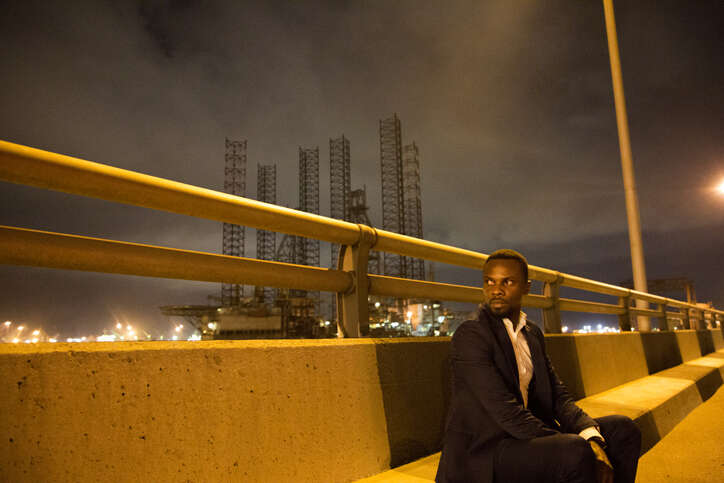
The summer of 2022 was a hot one in Lagos. On 19 July, the Transmission Company of Nigeria (TCN), anticipating an overloading power grid, announced that it would carry out preventive maintenance in the Lekki transmission substation. It caused a minor reduction in electricity supply, but even well-off neighbourhoods, like those in Lekki Phase 1 and Oniru, were not spared.

Power generation on that day, according to the Nigerian Electricity System Operator, ranged from 3,539MW to 3,967MW. The normal electricity output is around 3,000MW.
The next day, the national power grid collapsed for the sixth time in seven months. Power output nosedived to 40MW, which were allocated to the Abuja and Ibadan electricity distribution companies. As a result, most of Lagos was sent into a blackout.
Punch, a Lagos-based newspaper, ran an editorial on 2 August with the headline, ‘Nigeria’s Energy Crisis is Getting Worse‘. “From Nigeria’s energy sector,” the editors wrote, “the bad news is coming in torrents… effective measures are… needed to save the economy.”
It cited the numerous grid crashes during the year, dunking total power output to a low of 3MW. Higher energy costs manifest themselves in higher inflation numbers that will burden businesses, the aviation industry and the poor. The price index rose 18.6% in June.
The editorial continued to complain about the state of the national grid system. It is the only electricity network in the country, peddling about one-third of its installed generating capacity of 12,522MW. There is not enough gas to run generation plants. The grid, moreover, needs investments to upkeep it, that is if the funds are not lost to alleged corruption.
Is privatisation affecting the energy crisis in Lagos?
The 2013 privatisation of the electricity market backfired; the government ended up spending a further $4.5bn on it. The consumers suffer, too. In Lagos, residential consumers, who were charged differently than business customers, complained that they are paying so much for electricity yet get so little.
Among the newspaper’s recommendations is further privatisation in the electricity market, which includes the TCN; increasing private investments from domestic and international sources; and diversification into alternative energy sources like solar, hydropower and biomass.
Since the July outage was the fourth in the megacity this year, many Lagosians took to the streets to voice their complaints. In August, residents of Ojo gathered to protest the Eko Electricity Distribution Company. ‘Enough is enough, EKEDC (Eko Electricity Distribution Company) give us light,’ read a placard.
[Read more: South Africa doesn’t need new cities: It needs to focus on fixing what it’s got]
This power crisis is just a manifestation of the energy poverty in Lagos. Generating more electricity will not end the lack of access to petroleum, hydropower and burning wood, although the federal government is optimistic.
Speaking at a Society of Petroleum Engineers (SPE) Nigeria event in the city on 2 August, Bala Wunti, an executive from the National Petroleum Investment Services, reiterated that Nigeria is committed to total energy self-sufficiency by 2026. According to him and Olalekan Olafuyi, chairman of SPE Nigeria, this can be achieved by attracting investments, implementing effective legislation, and committing to regional integration, like the African Continental Free Trade Area.
Lagos: the fragile but resilient city
Lagos, the largest city in Africa and home to 70% of Nigeria’s industrial investments, is seen by many as struggling. Its population of 21 million people is projected to rise to as many as 100 million in 2100, making it the largest city in the world. As in any megalopolis in the global south, housing shortage, traffic congestion, crowding, and unemployment are endemic. Some 60% of its residents live in slums.
The neighbourhood of Ajegunle could be mistaken for certain areas of Kinshasa, in the Democratic Republic of Congo. The floating settlements in Makoko would perhaps remind a well-travelled person of the stilted huts over Manila’s waters in the Philippines. Slum dwellers, like their counterparts in other developing nations, have limited plumbing and power.
Inadequate sewage may be a nuisance and health hazard. Chronic power outages pose health risks through, among other things, their effect on food storage and consumption, as well as breed other problems, like violent criminals in poorly lit streets.
Nonetheless, the want for reliable electricity is, in fact, a distinguishing feature of life in this city, reflecting the deprivation of Nigeria at large. It is a contradiction. Despite living on a large reserve of coal, oil and natural gas, millions of Lagosians are energy poor. This affects the city substantially, and not just economically. When power is drained from a computer or radio, it no longer functions.
In the same way, a modern city without an adequate source of electricity cannot accomplish its daily tasks, let alone realise its potential. Power is needed to start a bus, work a water pump, and switch on a light at home or a place of business after the sun goes down. To end energy poverty in the 21st century requires smart technology, big data, artificial intelligence (AI), and a lot of solar panels. But they are not enough on their own.
Lagos needs to reboot and carefully steer its relationships between businesses, consumers, the government and foreign investors. Like with the sinking Jakarta and the falling water table of Mexico City, dealing with the power crisis here cannot rely on doing business as usual.
[Read more: Africa’s smaller cities are usually overlooked: They shouldn’t be.]






